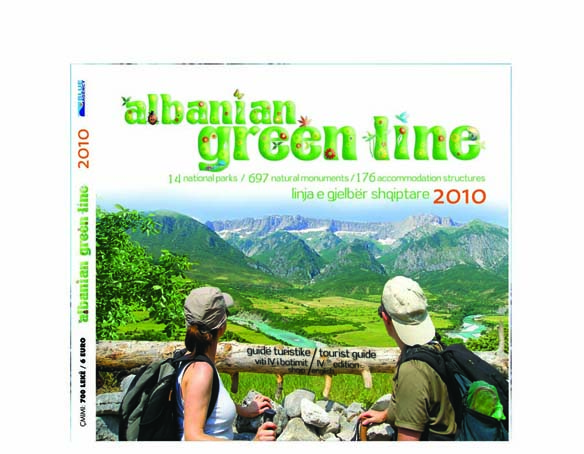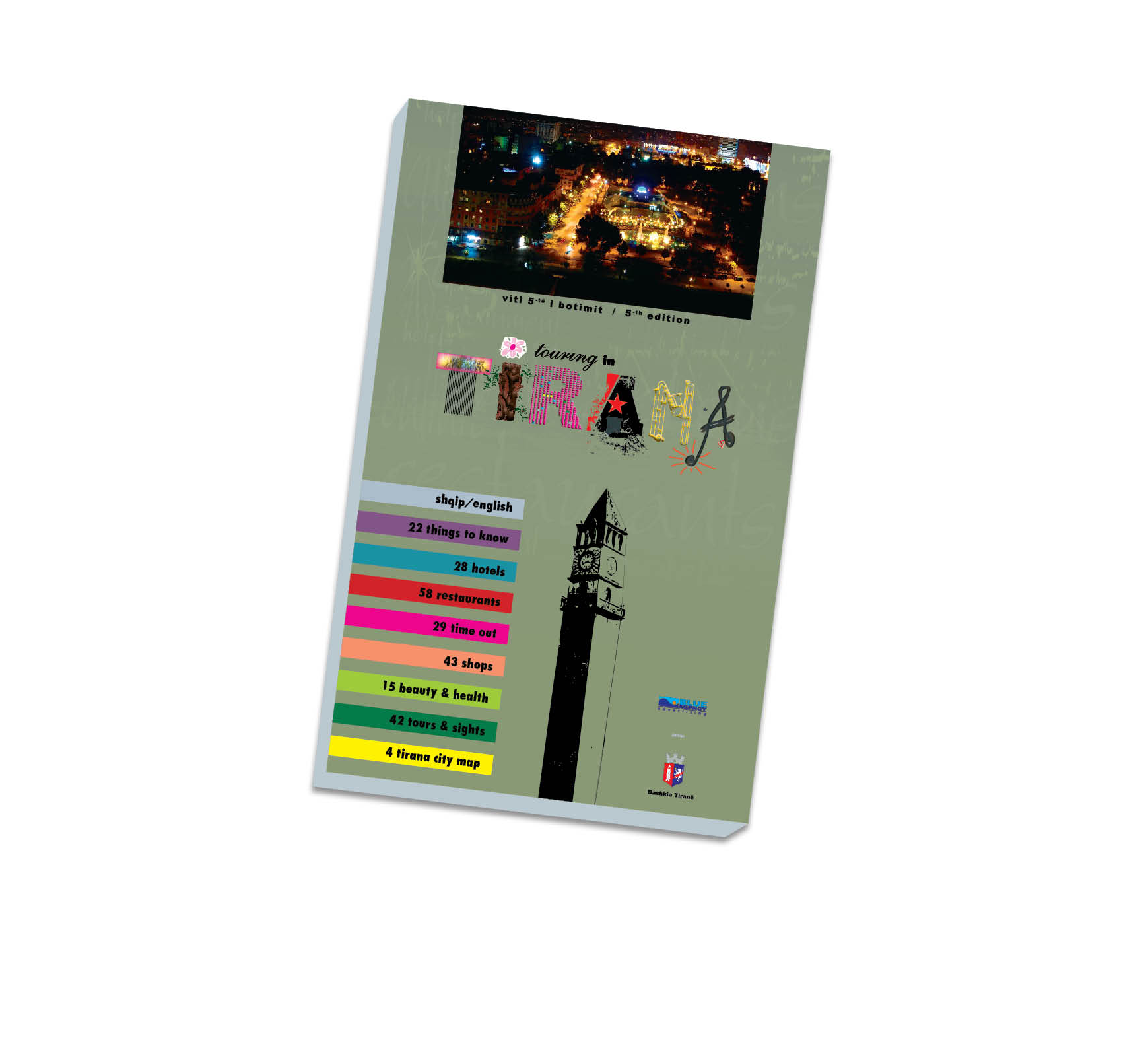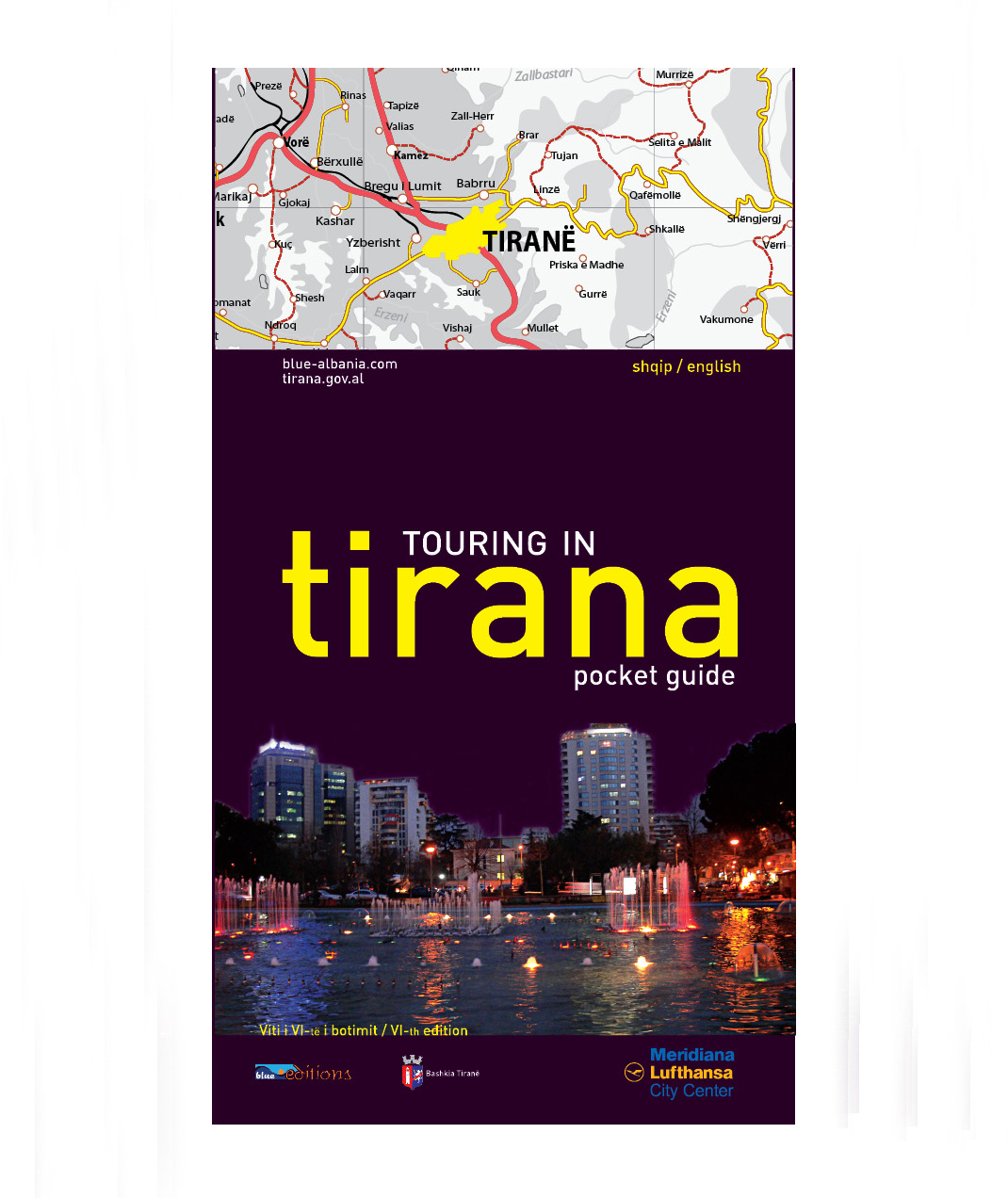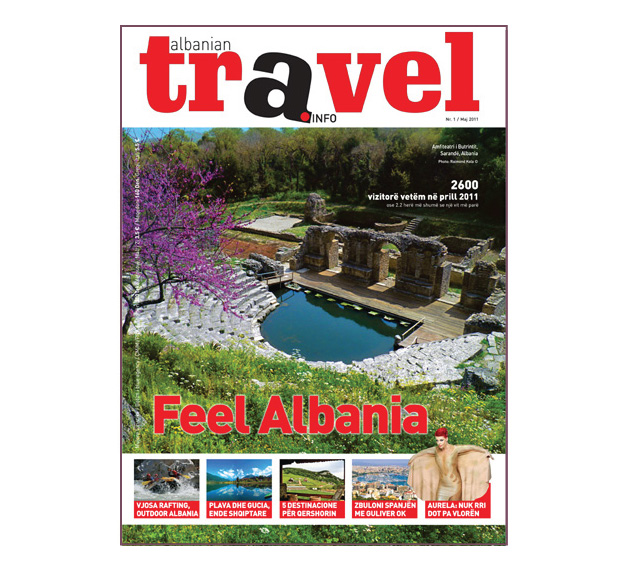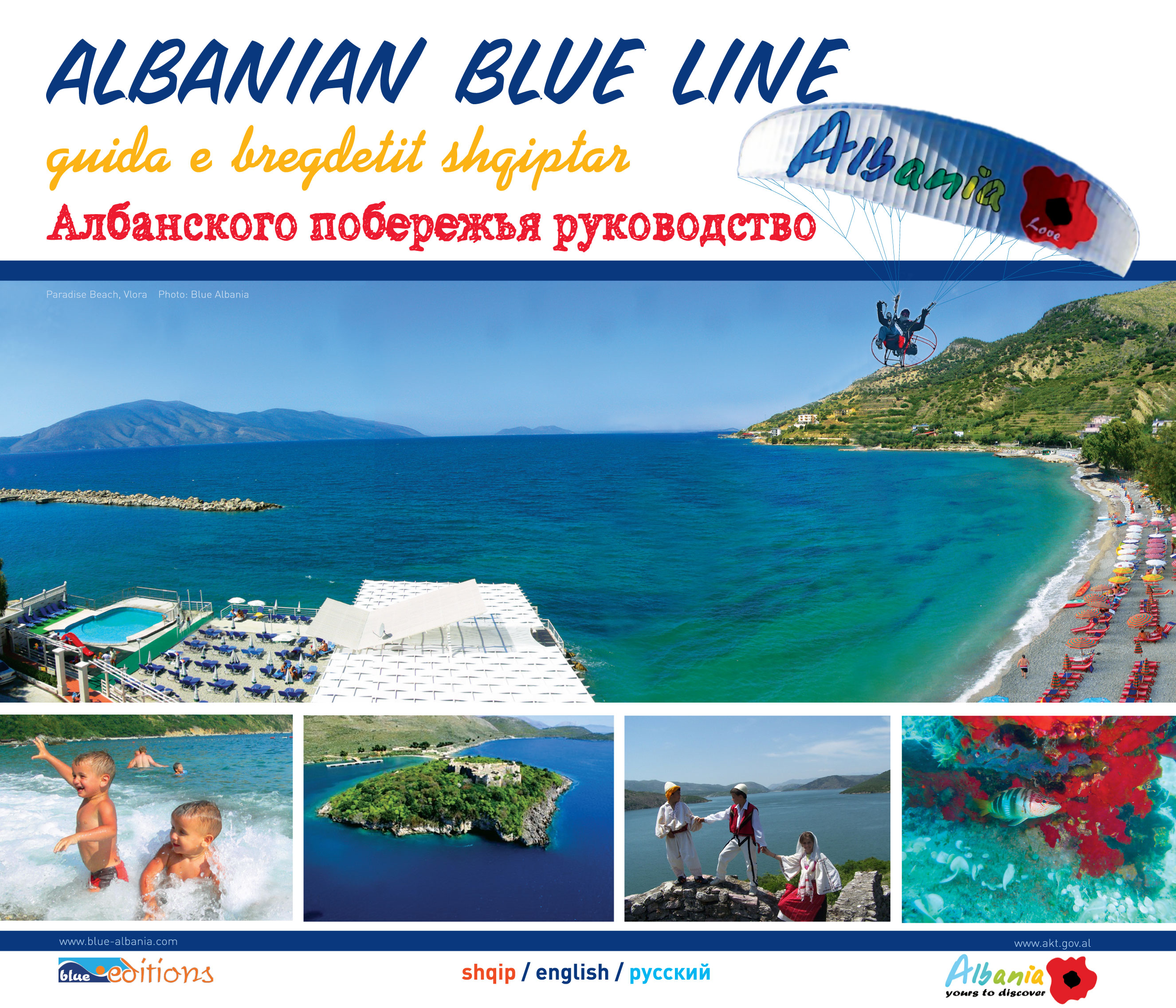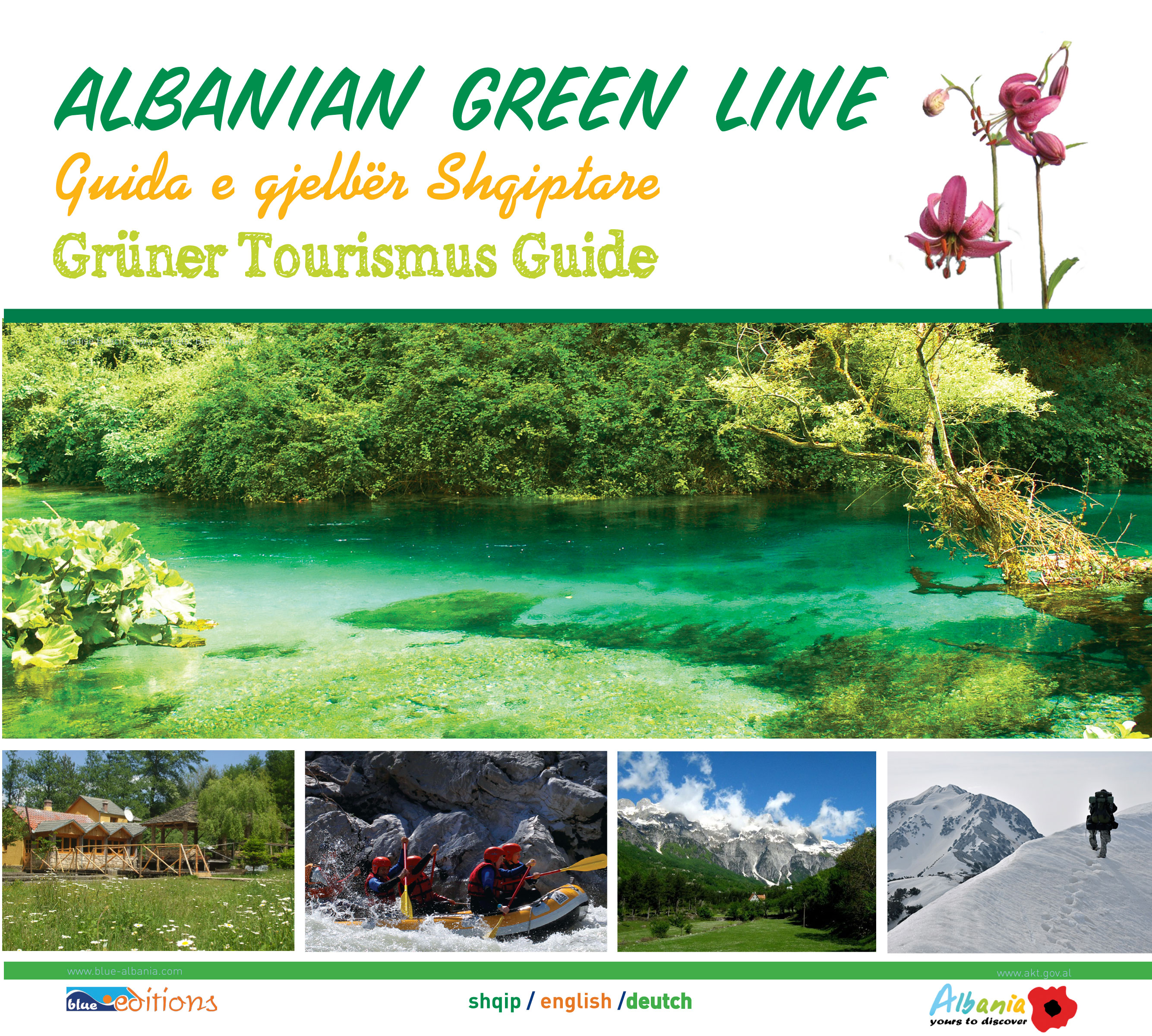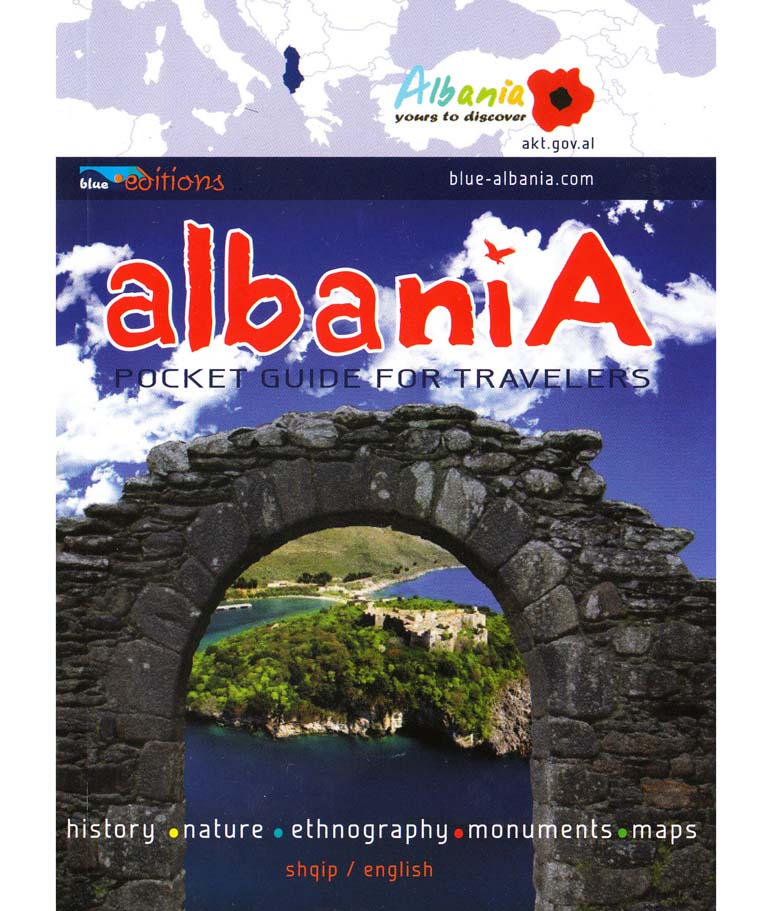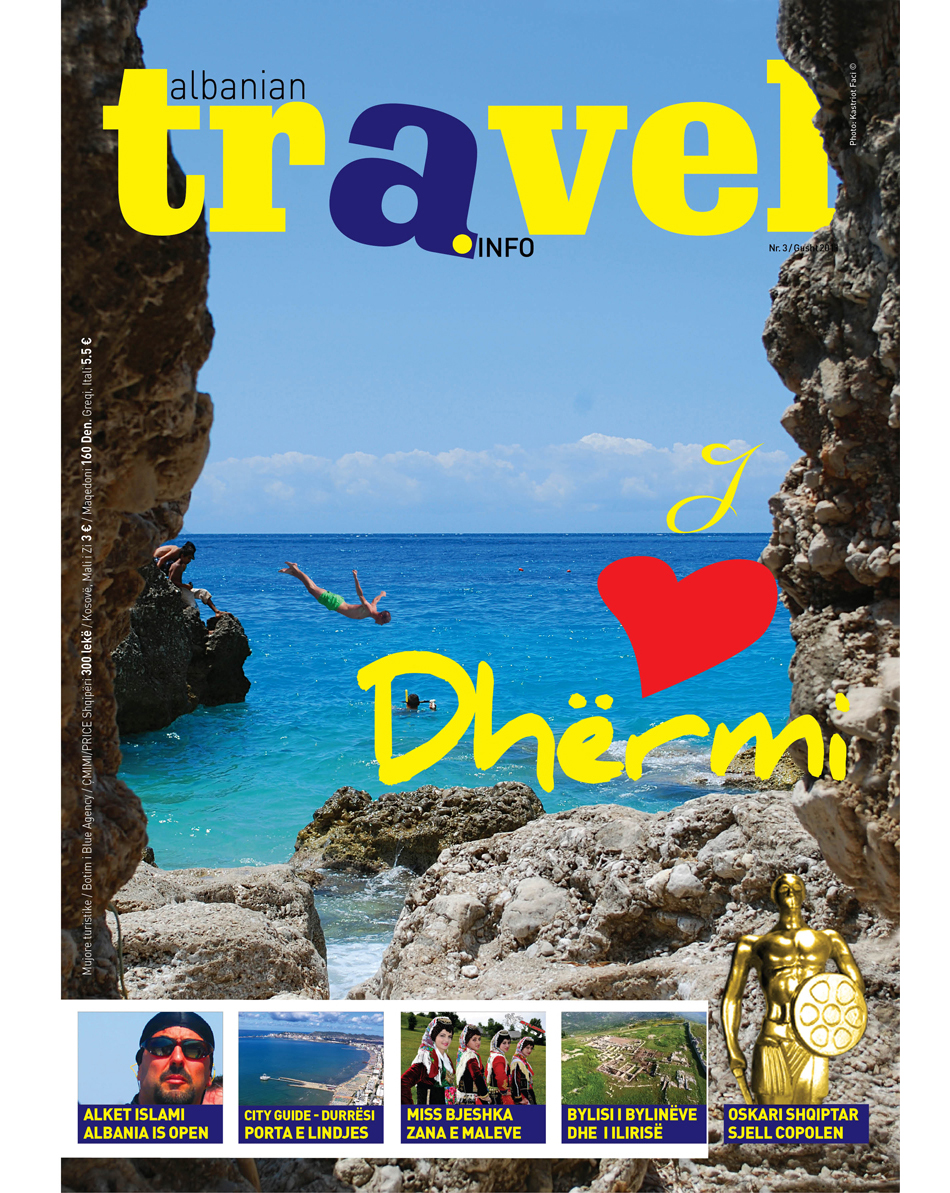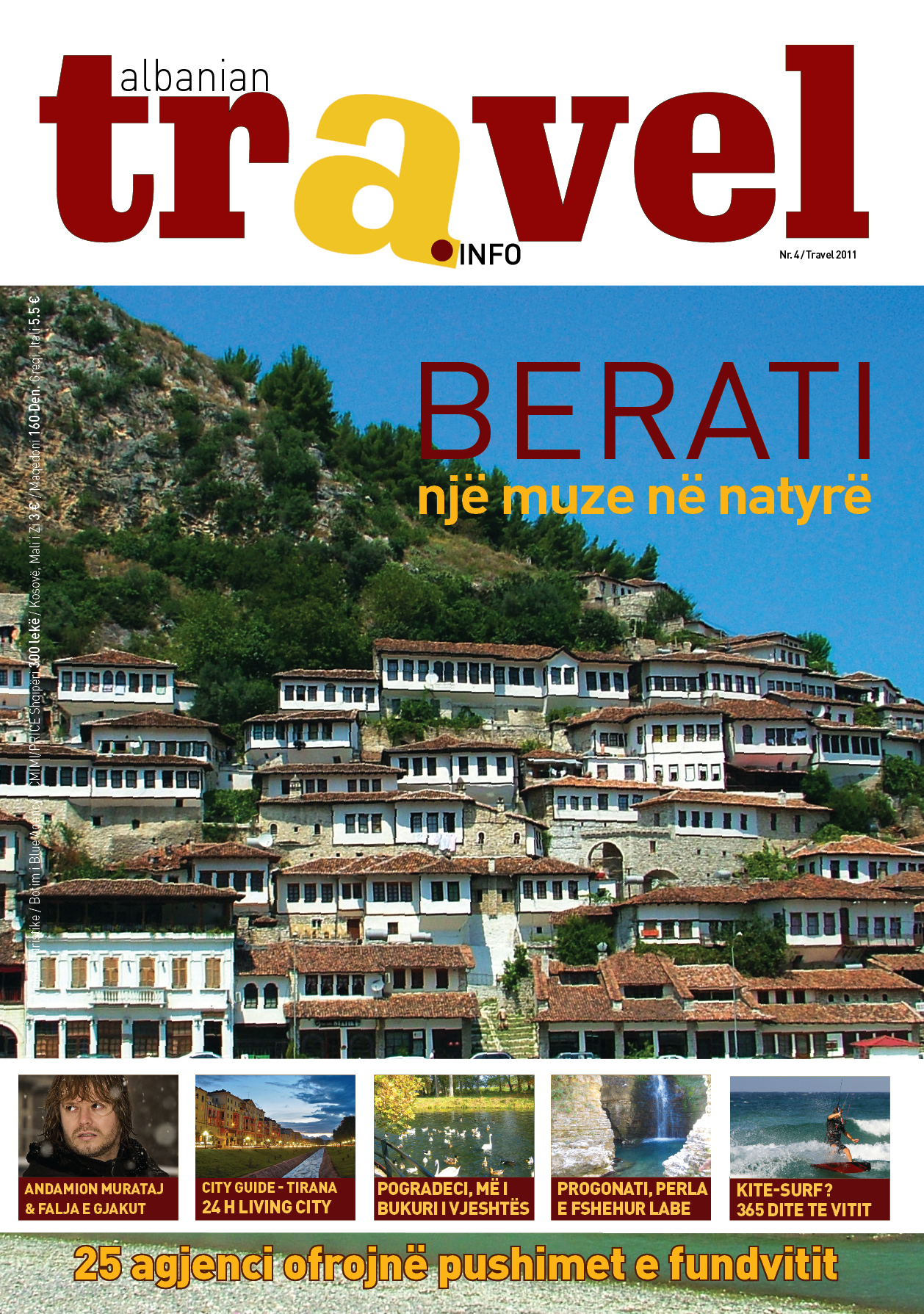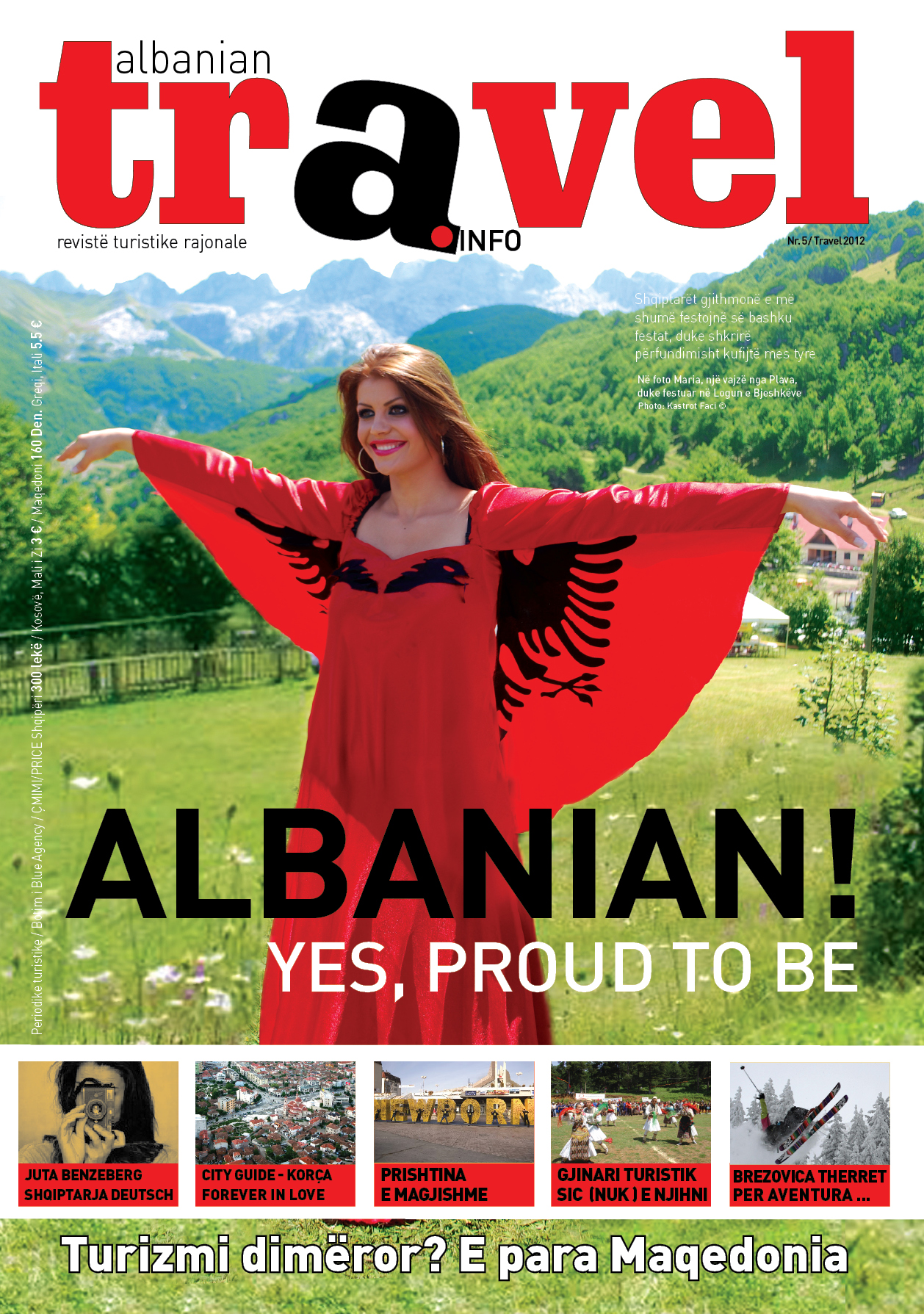In the heart of the Mediterranean, on the Adriatic and Ionian Seas, Albania is fast becoming one of the world's most interesting getaways. Still relatively unspoiled by globalization, tourists will notice an inspiring mixture of civilizations and cultures - making this European country truly unique.
In the western part of the country lie the Western Lowlands , with a mainly plain relief and rich vegetation of this type. Along the whole coastline, in the lowland area from Shkodra to Vlora, there are numerous beaches with healthy Mediterranean climate.
The Western Lowland area has a rich hydrograph. It is permeated by numerous rivers and spotted by lakes of tectonic and karsts origin, which further add the beauty to the area. In the northern part of the lowland area, there is the Shkodra lake. The Shiroka beach stretches along its shores.
Along the Adriatic coastline, the Western Lowland area forms numerous bays with clear water and fine sand, which are very suitable sites for coastal tourism.
The central Mountain Region lies in the Eastern and South-Eastern part of the territory. Here the relief is more complicated and horst - grabber type prevails. It is characterized by a rich Mediterranean and continental vegetation. The highest peak of the country (Mount Korabi
The Southern Mountain Region consists of mountain ranges, slopes and separated mountains which are interwoven with gorges, hilly and pre-mount systems and valleys providing it the features of a grand mountainous region. This region is permeated by numerous streams. The coastal area of this region, for the magnificent beauty it represents, has been named after Albanian Riviera. The coastal mountains run from Vlora bay in the North to Delvina basin in the South.
The Northern Mountain Region has mainly an Alpine relief characterized by a cold climate, alpine karsts hydrograph and with a partial endemic, but rich vegetation. The Alps of Albania resemble a big cupola. They have pyramid- shaped peaks (Jezerca 2694 m) and deep valleys, numerous rivers and glacial lakes which impart a magnificent beauty to the region. The abundant snow falls during winter create very favourable natural terrain for the development of white tourism, for those who love skiing and other winter sports.
Main Lakes
In the North-Western part of the country, there is the Shkodra Lake Balkan Peninsula . It is 368 square kilometres, out of which 149 square kilometres are within the borders of our country. Its depth is 10-12 m. It has a tectonic - karsts origin. In the North-Eastern part, there is the Fierza lake named after the Hydro-Power Plant. In the South-Eastern part, there is the Ohrid lake of a karsts origin and a surface of 367 square kilometres. A bit southward there are two other lakes of tectonic origin: Bigger and smaller Prespa lakes with 285 and 44 square kilometres respectively.
Other small lakes have dotted Albania
Main Rivers
The main rivers permeating the territory of our country are: Drini (285 km), Semani (281 km), Vjosa (272 km), Shkumbini (182 km), Mat (115 km), Buna (44 km), Ishmi and Erzen.
Demography
The population of Albania
In Albania
National minorities represent about 2% of the population and they consist mainly of Greek (in the southern part of the country) and Macedonians (in the Prespa area).
Climate
By drawing a comparison between Autumn and Spring temperatures, one notices that spring is cooler than Autumn.
The maximum absolute temperatures have been recorded in the southern part of the country, in the coastal area and in Myzeqe. The minimum absolute temperatures are more accentuated in the interior of the country, in closed hollows.
Flora
Albanian flora is rather rich beginning with evergreen Mediterranean plants and ending with Alpine fir. It consists of 3220 kinds of plants (in addition to sub- species and varieties). They constitute 29% of the species of European flora and 47% of the kinds of the flora of the Balkan Peninsula . About 1% are endemic and 5% sub endemic plants. 85% of the kinds of plants are linked with Mediterranean flora, with the flora of Central Europe and less with that of Western and Eastern Europe .
Fauna
Land fauna is represented, among meat eaters, by brown bear, wolf, fox, jackal, lynx, wild cat, otter, etc.; among insect eaters by long-nose animals; among grass eaters by wild goat, deer, boar, hare, etc. Rich is also the fauna of wild birds. It is represented by 350 species to be found all over the country. You come across with grouse, woodcock, snipe, pelicans and others. A number of reptiles are to be found as well.
Aquatic fauna: Different kinds of fish are to be found in sea and inland waters. Among the most wide spread are: Koran, sardine, mullet, red mullet, carp, red cohort lebery, specled trout, etc. Likewise, offshore of the Adriatic sea there have been appeared rare species which are not characteristic for this sea such as whales, white breast seals, oceanic whales.
History
Albania has been inhabited as early as 100.000 years ago. At the beginning of the third millennium BC that an Indo - European population settled in this territory. As a result of the mixture, a population incorporating the unique cultural and linguistic characteristics of the whole Balkan Peninsula (pellazgs) was created. Based on this ancient population, the Illyrian people developed through the second millennium and the first century B.C. After its fall in the year 30 B.C. Illyria came under the control of Roman Empire . Searching in the history of ancient epoch, we discover that Albania Illyria from the epoch of Bronx , till in the first Millennium AC, because of Illyrian people who lived in the Balkan Peninsula as an autochthon population. Later on, Illyria became Arberia, called from Greek geographer, Ptolemeu.
With the division of the Roman Empire ( 395 A.D) ,Illyria became a part of the Byzantine Empire. The country has suffered continuous invasions over the last 1000 years and by the end of the 14th century Albania was occupied by the Ottoman Empire. The subsequent efforts and insurrections for independence eventually brought about the proclamation of the independence of Albania in 1912. After 1912 till the end of the First World War , the country was attacked by neighboring countries. After eleven years of monarchy the country was occupied by Mussolini forces in1939, putting the end of monarchy. In 1943 the armies of Hitler occupies the country.
The resistance against foreign invasion was known as the Anti - Fascist National Liberation front. The Communist party took power in November 1944, when the foreign armies were expelled. Shortly thereafter, a totalitarian regime was established under the communist leader Enver Hoxha. For about 50 years, the regime applied the policy of self-isolation, leaving the country in great economic poverty when it finally emerged from isolation in 1991. The principle of self-reliance applied by the Communist regime prohibited foreign loans, credits and investment. From 1992 until 1997 The Democratic Party lead the country. After the unrests of 1997 due to the failure of pyramidal schemes the Socialist Party with its coalition is in power.
The resistance against foreign invasion was known as the Anti - Fascist National Liberation front. The Communist party took power in November 1944, when the foreign armies were expelled. Shortly thereafter, a totalitarian regime was established under the communist leader Enver Hoxha. For about 50 years, the regime applied the policy of self-isolation, leaving the country in great economic poverty when it finally emerged from isolation in 1991. The principle of self-reliance applied by the Communist regime prohibited foreign loans, credits and investment. From 1992 until 1997 The Democratic Party lead the country. After the unrests of 1997 due to the failure of pyramidal schemes the Socialist Party with its coalition is in power.
Between wars, from century to century, Albania Albania
Territories of today's Albania
At the beginning of the third millennium before Christ, was established population Indo - European.
As a result of this blend was created a population that retained the characteristics of specific cultural and language in the Balkan peninsula (pellazgët).
Based on the older population, between the II Millennium and the first century before Christ was created Illyrian population. The Greeks arrived in Epidamos (today Durrës) Butrint and Apoloni in 7 century before Christ to decide where colonies of them - run. As well as Greeks, the Illyrians even though under Roman domination for centuries failed to preserve their language and traditions.
The most important trade route between Rome port of Durres Albania Roman Empire .
From 1443 until 1468 national hero Scanderbeg (Gjergj Kastrioti) led the Albanian resistance, winning the 25 battles against turkish. For a very short time, after the death of Scanderbeg, the Ottoman failed to Albanian resistance, taking control of the country in 1479.
26 years later, Kostandinopoli crashed.
More than 400 years, Albania
Successive revolt and efforts brought the Independence
Since from 1912 until the end of the First World War our country was attacked by neighboring states.
The country was occupied by Mussolini's forces in 1939, ending the regime of the monarchy that lasted 11 years.
In 1943 the country was occupied by German forces.
Resistance to foreign attacks is known as Anti-Fascist National Liberation front.
Communism took over in November 1944, when foreign forces left the country.
Eventually, the totalitarian regime, was established under the leadership of the communist leader Enver Hoxha. For 50 years, the country was in complete isolation, a result of politics(policy) that was pursued at that time. The policy of self isolation, left the country in economic poverty until 1991.
From 1991 until 1997 the country was led by the Democratic Party, and later by the Socialist Party and its allies (2005-2007). After the last elections on 3 July 2005 , the coalition of the Democratic Party took the power again. Albanian policy aims to integrate the country into the European Union.
Language
The Albanian language is the official language.
Albanian is a successor of the Illyrian language. In its lexical there are to be found borrowings from Italian, old and new Greek, Latin, Slavic languages of the Balkan and Turkish. Despite that, it has preserved its originality as a special language.
Folk beliefs
Folk beliefs are link with cults, the religious rites, magic practices, folk mythology and calendar, family and social life and production. Among the elements of totem, the most important is the cult of snake as protector of the house, as a benefaction.
Religion
Three religions co-exist in Albania
Ethnography
The Greek and Roman ethnographers provide the first ethnographic data on Albania Albania
Handicraft
Handicraft in Albania
Monuments of Culture
The earliest objects of figurative arts belong to prehistoric period (the 6th to the I-St Millennium BC) with Neolithic ceramics and terracotta. The Illyrian art with its distinguishing features is formed in the early Iron Age (1100-500 BC) and continues up to the beginning of the New Era, in particular in the Illyrian cities of Bylis, Amantia. Foinik, Buthrot, etc, and the Hellenic settlements of Durrah, Apolonia, Orik etc.; where there have been unearthed precious works in sculpture, mosaic, ceramic as well as artistic objects made of stone and metal. In the Paleochristian and Byzantine objects there are to be found wall paintings and icons of a high artistic level, such as the frescos of the Monastery of Pojan, the Church of Ristos
A culminating point in the Medieval art is represented by the works of Onufri Qiprioti. Realistic elements of baroque style (David Selenicasi and Kostandin Shpataraku) were introduced in the genre of painting in the 18th century.
During the period of National Renaissance, the figurative arts broke away from religious iconography and treated mostly the patriotic subjects. Kol Idromeno has been the most distinguished painter of this period.
During the period of world war II, there were realised works of art of artistic value, such as the monumental works devoted to national historic events.
The modern figurative arts, freed from the Communist ideology, have assumed a great impetus at present. The Gallery of Figurative Arts, containing many works of high artistic value, is in Tirana.
Theatre
Albanian theatre has long-standing traditions. This is testified by the archaeological excavation of the theatres and amphitheatres dating back to the 4 Th. - 3 rd centuries BC
The amateur theatre comes into existence at the period of National - Renaissance and , it created its tradition in Shkodra, Korca, Gjirokastra and Elbasan.
Professional theatrical and variety-show troupes are available in the main cities of the country. The national Theatre, the Opera and Ballet Theatre and National Theatre of the Children conduct their activity in Tirana.
Sports
The numerous stadiums discovered in the ancient cities are an evidence of the long-standing sports traditions in the country. Almost all kinds of European sports are known and practiced in Albania
Sports activities are run by Sports Clubs and Federations of the country.












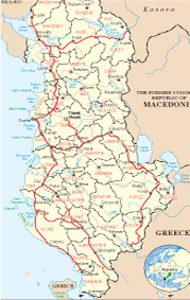




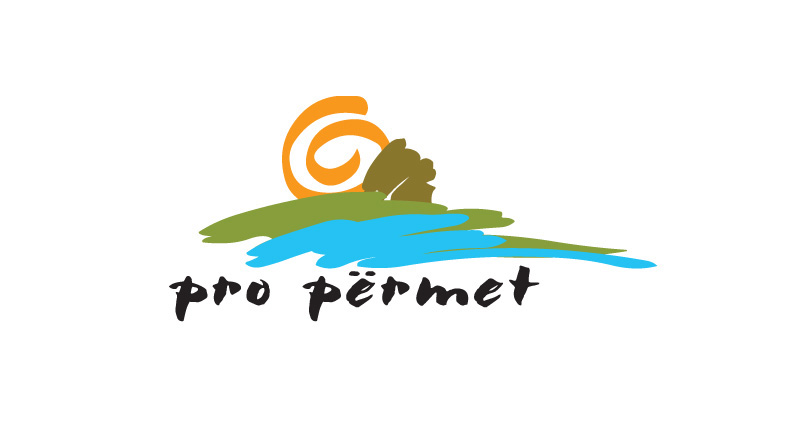
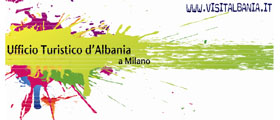
.jpg)
